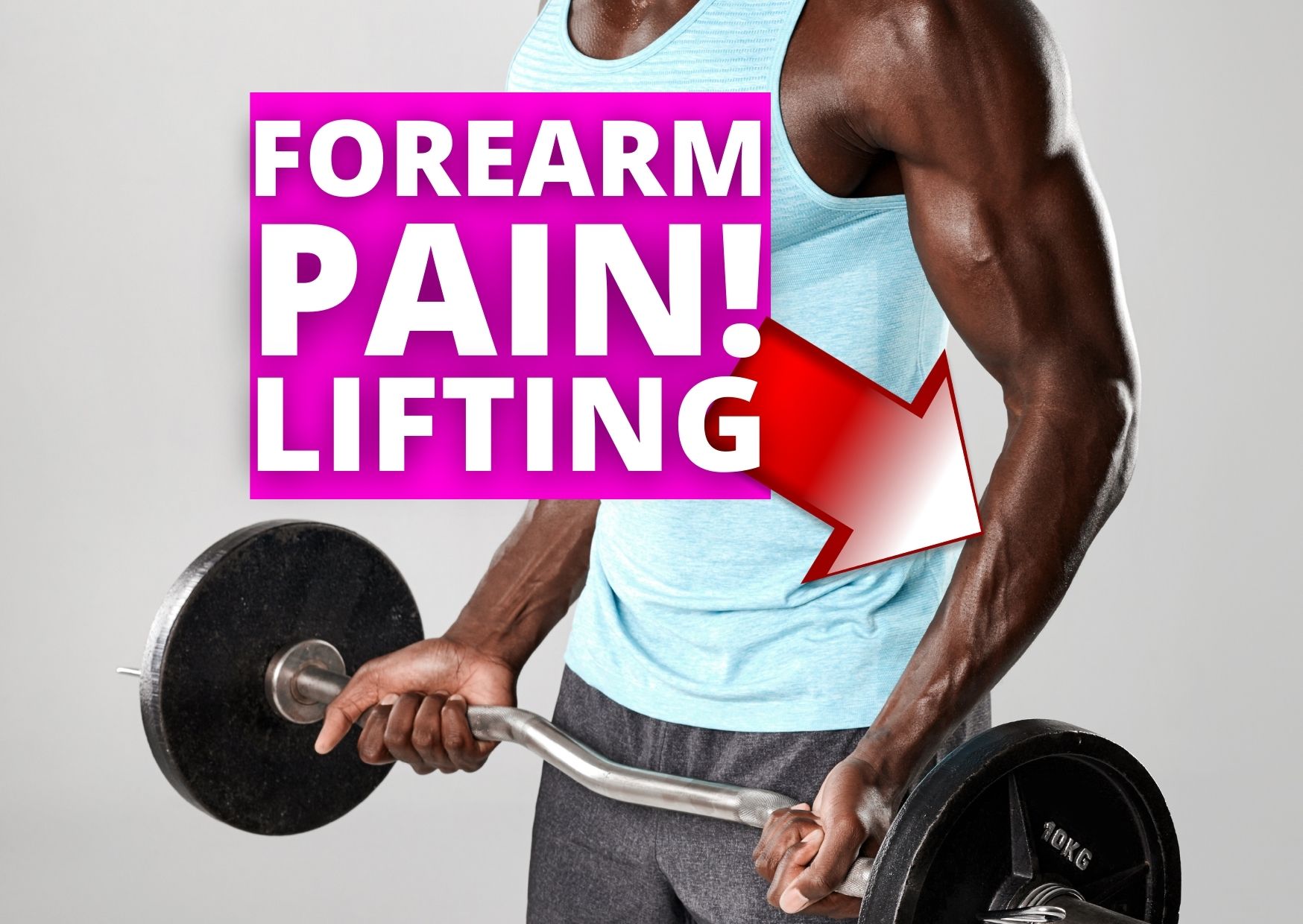4 Reasons You’re Getting Forearm Pain When Lifting
Lifting in the gym can be one of the most enjoyable and satisfying forms of exercise, but not when we’re in pain!
Lifting heavy weights or performing lots of repetitions can in some cases lead to pain in the forearm, tightness, tension, or discomfort.
Why Do I Get Forearm Pain When Lifting?
When understanding forearm pain, it’s important to work out the specific exercise that may be causing it.
Lifting heavy weights can put a lot of strain on the muscles in the forearms.
Are you getting forearm pain when curling, when performing a bench press, or when doing pull exercises?
Once you know the exercise that is aggravating it, then you can start to begin to identify what is causing the pain.
Pushing and pulling exercises add strain to the forearm in different areas depending on the exercise.
Any weight-bearing exercises that involve gripping can put a lot of strain on the muscles in the forearm.
Some of these muscles include Brachioradialis, Flexor Carpi Radialis, Extensor Carpi Radialis as well as a range of smaller muscles.
4 Reasons You’re Getting Forearm Pain When Lifting
1. Muscular Tension Build-up
When we lift weights, they put a lot of pressure on the muscles in our forearms. This pressure can cause muscular tension and tightness to build up gradually over time.
When our muscles are tense, tight, and overworked, they can cause a variety of different painful sensations. Some of these may include sharp pain, aching, or even burning.
It’s advised that if you’re in pain, you should seek the advice of a professional.
This article should provide all the relevant information to help you work out how to ease your pain.
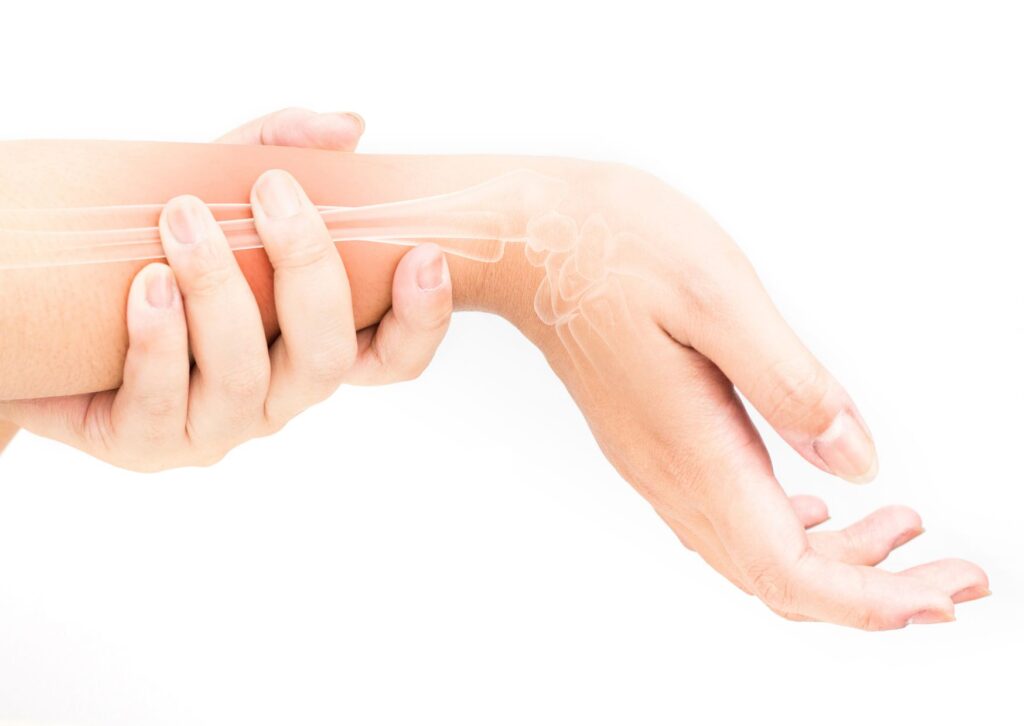
2. Incorrect Technique
The muscles in the forearm are designed to perform specific movements.
When these muscles are put in unnatural or awkward positions it can cause them pain or discomfort.
When lifting, the technique is so important. If you’re unsure of the correct techniques to use when lifting then you should seek advice and guidance from someone who knows best.
If you’re in the gym, personal trainers are usually the best people to ask and are often willing to help.
3. No Muscle Maintenance or Rehab
Lifting weights puts a lot of demand on our muscles and if we’re not doing anything about it then it can cause us pain.
Those who train regularly know the importance of looking after and maintaining their muscles. (Or at least they should)
If you’re not looking after your muscles with maintenance then this can cause them to become weak, overworked, tired, and cause pain.
Stretching the forearms is one of the ways we can help to keep them in good shape.
However, things like Sports Massage or Deep Tissue Massage can be a great way to help keep your muscles supple, flexible, and pain-free.
Some individuals also use tools such as trigger point balls or massage guns which can help to reduce tightness, tension, and discomfort in the muscles.
Trigger point balls are a great self-treatment method to help reduce forearm restriction on your own. Take a look at the video below to see how.
4. Overtraining
Sometimes our muscles have just had enough.
To get maximum gains, our muscles need to be able to recover from their previous workout.
If the muscles in our forearm are overworked and overtrained, they can become damaged, restricted, and weak, often causing us pain.
I completely understand that a rest day scares some of us, but to get the best results sometimes we need to give our body time to recover.
Why Do I Get Sharp Pain in My Forearm When Lifting?
Sharp pain in the forearm could be due to a variety of reasons but one of the most common is usually muscular restriction.
When our muscles are restricted, they can elicit shooting pain. This is often because a nerve is being compressed or irritated due to muscular restriction and/or tightness.
Sharp pains might be noticed after long periods of inactivity when the muscles are extra stiff and blood flow is reduced, or when performing particular movements that aggravate the forearm.
Why Do I Get Forearm Pain Near My Elbow When Lifting?
There are a few muscles located in the forearm that cross the elbow joint.
These muscles include:
- Brachioradialis
- Brachialis
- Pronator teres
These muscles attach just above the elbow as well as on the forearm.
When these muscles are aggravated, overworked, or put under a lot of strain they can cause pain and discomfort.
If you’re lifting weights and the movement involves bending the elbow, the muscles mentioned will be working and if these are movements that are too strenuous then this could be causing your pain.
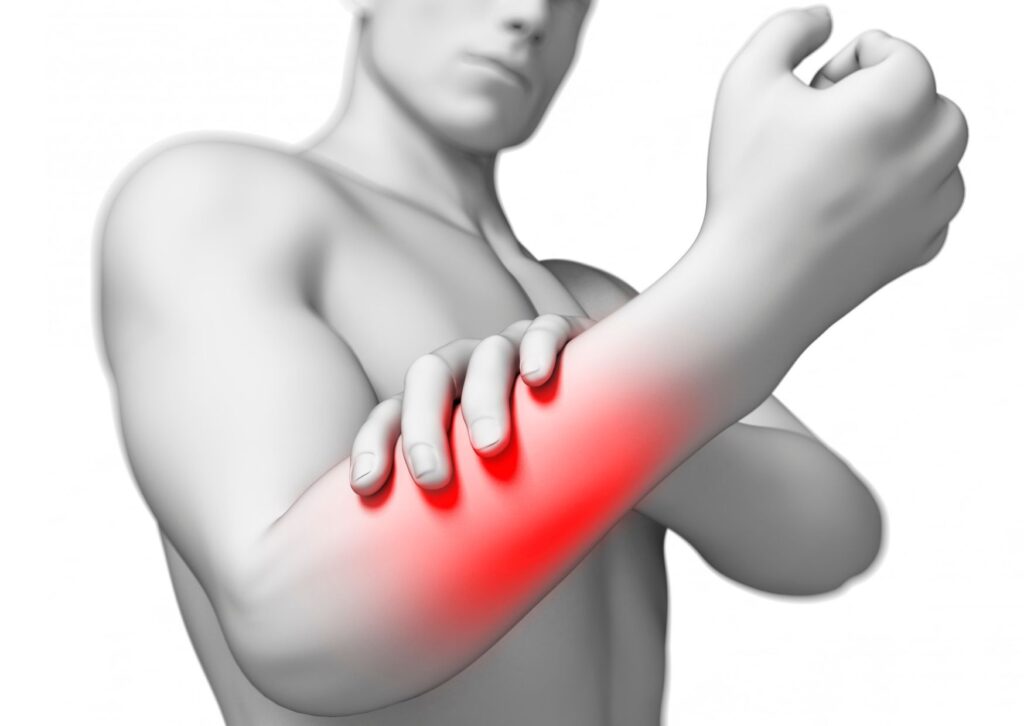
Forearm Pain When Twisting?
Our forearm is located between our wrists and elbows
Rotating our hand inward is known as pronation.
Rotating our hand outward is known as supination.
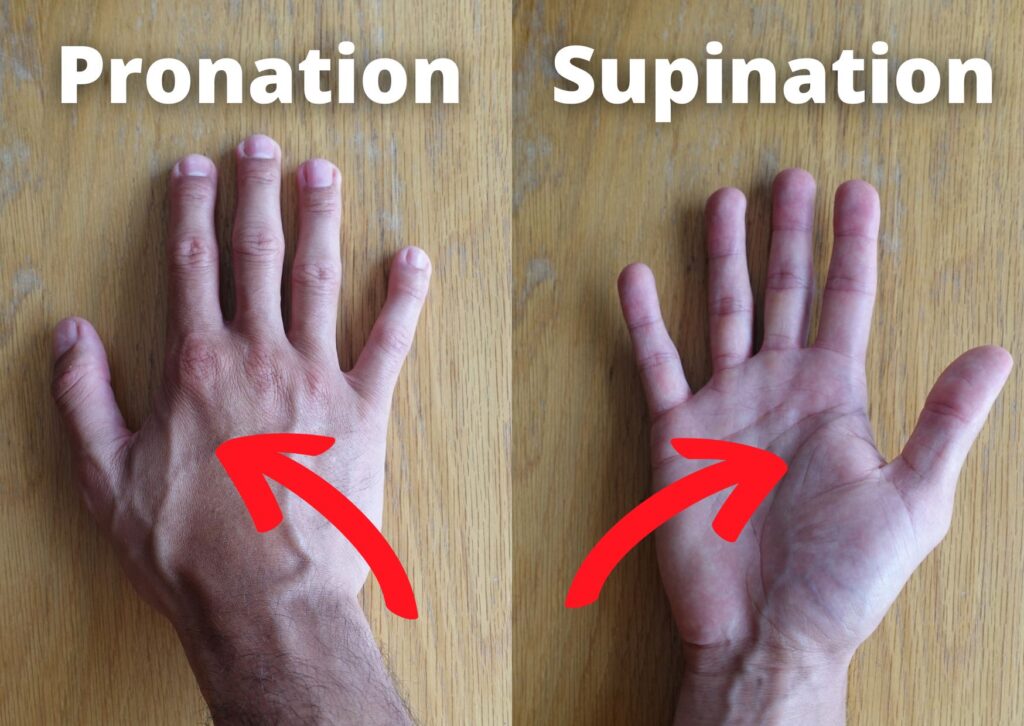
The Pronator Teres is one of the muscles responsible for rotating and twisting the forearm inwards (Pronation).
The Supinator is one of the muscles responsible for rotating and twisting the forearm outwards (Supination)
Seek the advice of a professional if the muscles in the forearm are damaged or injured.
Pain in Forearm When Gripping?
Movements that involve gripping use a range of the muscle in our forearm.
When we grip, our fingers flex forward and hold onto the object that we’re gripping.
Most of the muscles that are responsible for the movement of our fingers originate in our forearm.
Gripping can put strain and tension on these muscles, especially if they’ve been overworked, damaged, or injured.
This strain or tension can cause pain, discomfort, and tightness.
To reduce pain when gripping we should aim to reduce the amount of continuous stress and pressure on our forearms.
These muscles may also be damaged and therefore would be best to seek the advice of a local physio or sports therapist to help advise you best.

How to Reduce Forearm Pain When Lifting?
Wear a wrist strap
Wearing a wrist strap is a short-term solution to reducing your forearm pain when lifting.
A wrist strap helps to provide support when lifting heavy weights which reduces the pressure and strain put on the forearm.
If the muscles are injured, they will need to heal fully to get rid of the pain, a wrist strap is not a long-term solution.
Ice The Area
Ice has a range of benefits, including reducing forearm pain.
Icing the forearm can help to reduce any soft tissue swelling and numb the pain receptors which can reduce your pain.
If you fully submerge your forearm in ice you are likely to get best result. Using a bucket of water and ice that allows you to put your hand and forearm in, will allow full forearm immersion.
If this is not possible, using an ice pack or ice bag can help to reduce the pain if applied directly to the forearm.
You should aim to ice in 5/10-minute intervals.
See a specialist
Prevention is always better than cure and visiting a specialist who can help will always trump any other advice.
A specialist can help to identify the exact cause of the injury and offer a plan.
This may include getting manual therapy such as a sports massage, or taking days off from lifting and resting.
Whatever they advise, it’s sensible to listen.
Stretch the forearm
If your forearm pain is specifically due to tight muscles then stretching the forearm is very likely to help.
Check the section below to see how to stretch the forearm
How To Stretch the Forearm After Lifting Weights?
Stretching is one of the best things you can do after lifting weights.
Weight lifting can put excess amounts of pressure on our wrists, elbows, and forearms, and stretching is a fantastic method to combat this.
Check out the video below which shows how to stretch the forearms safely and effectively.
Why You May Have Random Forearm Pain?
Although it may not seem it, forearm pain is very rarely random.
There is almost always a reason why, it’s just about identifying what that reason is.
Pain is often experienced because your forearms are aggravated, tight or tense and it’s often hard to work out what random activity has caused this.
Speaking with a professional physical therapist may help you to identify the cause but you can work this out yourself.
What activities have you done lately or been doing that involve your forearm and may be causing it pain?
Some of these random activities can include, laying awkwardly, typing, climbing, gripping, punching, clicking, holding, and almost anything that involves using your hand or arm.
It’s even possible that you may have hit your forearm on something and not remembered.
Why Does My Forearm Burn?
A burning sensation in the forearm can be painful, uncomfortable, and a little scary.
When our body is in pain it can feedback a range of different sensations, one of which is burning.
An aggravated nerve can cause a burning sensation.
When a nerve is aggravated, signals are sent to the brain, letting us know something is wrong.
If your forearm is giving you a burning sensation it’s best to visit your doctor, a physiotherapist, or sports therapist to help you identify the cause and reduce the pain.
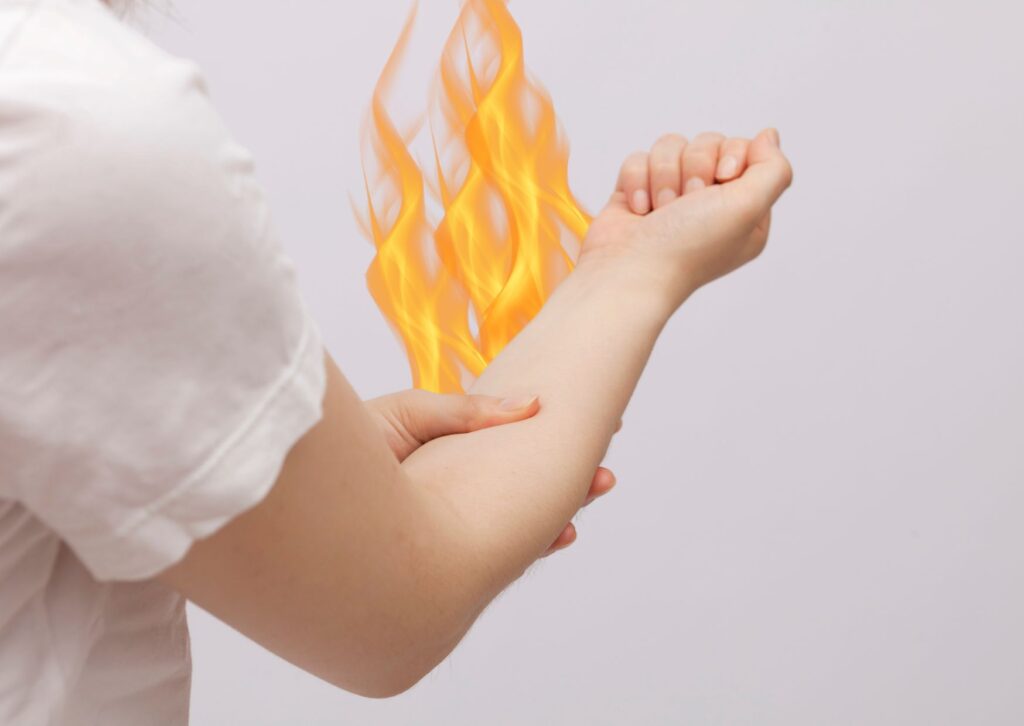
Author –
Tyler Lowe – Health & Wellbeing Speaker
BSc Sport & Exercise Rehabilitation


